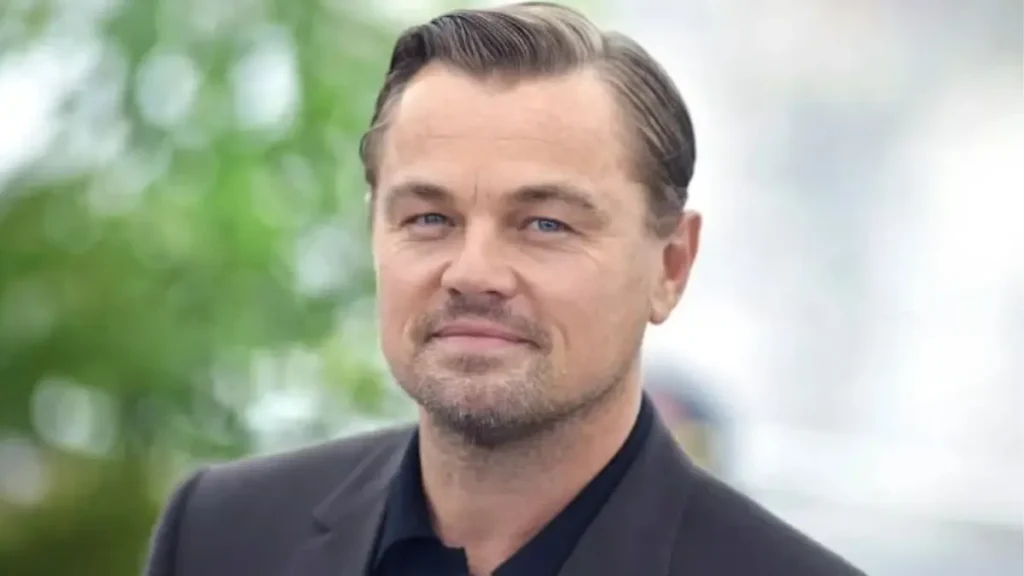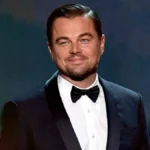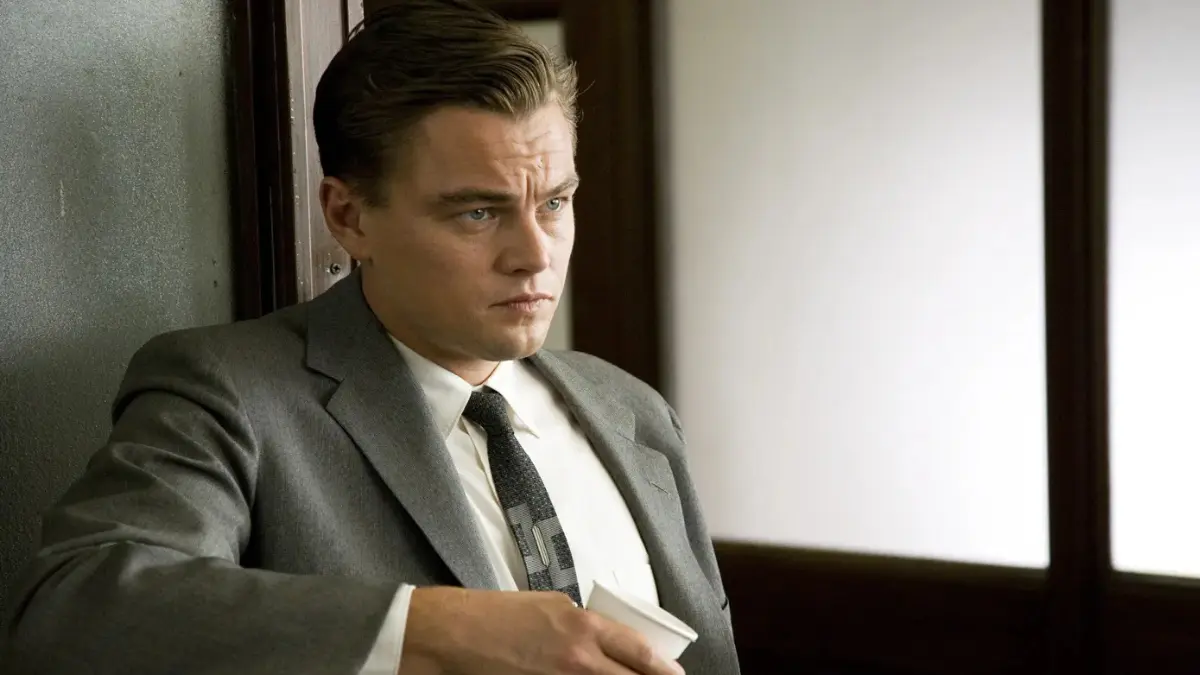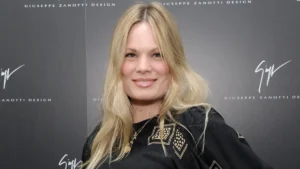A billion-dollar blockbuster, teenage fans fainting at premieres, and magazine covers plastered with his face — yet Leonardo DiCaprio, the man at the center of Titanic-mania, kept saying he just wanted to be “an actor, not a celebrity.”
That paradox — global superstar yet restless craftsman — is the thread that runs through his career.
Critics have long noticed it too. Vanity Fair once described him as “Hollywood’s reluctant golden boy,” while Forbes leaned on the numbers, reminding us he turned that reluctance into one of the most bankable careers of his generation.
Even Hindustan Times framed him as proof that commercial success and artistic ambition don’t have to cancel each other out.
And then, of course, came the memes — remember the years of #PoorLeo jokes about never winning an Oscar, only for him to finally triumph with The Revenant.
That’s the grit beneath the glamour.
From Child Commercials to “Growing Pains” Breakthrough
How Leonardo DiCaprio Started Acting
Leonardo DiCaprio began with TV commercials and landed his first recurring role on Growing Pains in 1991.
The fuller story? It’s a mix of grit, rejection, and one very determined mom. Irmelin Indenbirken, his mother, famously drove him to auditions all over Los Angeles, often after long workdays.
DiCaprio once admitted, “I got rejected hundreds of times. It was brutal, but my mom kept pushing me forward.” That persistence finally paid off when he joined the Growing Pains cast, working alongside Kirk Cameron.
It was also around this time that he befriended Tobey Maguire, a connection that would evolve into the infamous ’90s crew nicknamed the “Pussy Posse.”
Fans still love retelling how these two outsiders, often overlooked at auditions, found solidarity in each other before their careers skyrocketed.
The First Taste of Hollywood Recognition
Leonardo DiCaprio’s true Hollywood breakthrough came with This Boy’s Life (1993), where he starred opposite Robert De Niro.
The story goes that De Niro himself sat in on auditions and reportedly handpicked the young actor — a nod of approval that few newcomers ever get.
Critics quickly noticed. Roger Ebert praised his “startling emotional range,” and the LA Times described him as the rare teen actor who could hold his own against a legend.
That raw audition energy — described as both vulnerable and explosive — became a calling card for the rest of his career.
The performance didn’t just earn recognition; it opened the door to What’s Eating Gilbert Grape (1993). In that role, DiCaprio delivered a portrayal so convincing it landed him his first Oscar nomination at just 19. Not bad for someone still shaking off the sitcom label.
Titanic Fame and the Price of Global Stardom
Why Did Titanic Make Leonardo DiCaprio a Superstar?
Titanic (1997) made Leonardo DiCaprio a global superstar, grossing over $2 billion worldwide and turning Jack Dawson into a pop culture phenomenon.
But numbers only tell half the story. Leo-mania exploded — screaming fans camped outside premieres, Tiger Beat covers sold out, and MTV ran endless clips of him sketching Kate Winslet’s Rose. For an entire generation, his poster was the bedroom wallpaper of choice.
Directed by James Cameron, the film’s mix of epic tragedy and romance cemented DiCaprio as both a heartthrob and a serious actor in one swoop.
Unlike many teen idols, he resisted the trap of being typecast, using Titanic’s global fame as a launchpad for the next, riskier chapters of his career.
Navigating Fame’s Double-Edged Sword
After Titanic, Leonardo DiCaprio could’ve coasted forever as Jack Dawson — let’s be real, the world would’ve lined up for sequels that never existed. But Leo wasn’t interested in just being a teen idol.
His first big move was The Beach (2000), directed by Danny Boyle. It was hyped as his bold follow-up, but the film faced backlash from critics and environmentalists alike.
Instead of retreating, DiCaprio pivoted — choosing Gangs of New York (2002) with Martin Scorsese. It was the beginning of a creative partnership that would redefine his career.
Titanic era, he once said, “I didn’t want to become a teen idol. I wanted to focus on the craft.” That vulnerability, admitting how fame could have trapped him, is what set him apart. He didn’t just survive the frenzy — he outgrew it.
Martin Scorsese Collaboration: Reinventing the Actor
The Films That Defined Their Partnership
When Leonardo DiCaprio teamed up with Martin Scorsese for Gangs of New York (2002), it was more than just a film credit — it was the start of one of modern cinema’s most fruitful partnerships.
Together, they crafted a string of defining works: The Aviator (2004), which earned DiCaprio a Golden Globe; The Departed (2006), Scorsese’s long-awaited Oscar win; and The Wolf of Wall Street (2013), which pushed both of them into new, audacious territory.
Scorsese once called DiCaprio “fearless,” a trait that shows in the risks he took — from embodying Howard Hughes’s obsessive genius to Jordan Belfort’s chaotic excess.
Scorsese got his new De Niro, while Leo finally gained the gravitas critics once doubted he could carry.
How Scorsese and DiCaprio Compare to De Niro’s Era
Every generation gets its Scorsese muse. In the 1970s, it was Robert De Niro, whose performances in Taxi Driver and Raging Bull cemented their place in cinema history.
By the 2000s, Leonardo DiCaprio had stepped into that role, headlining Scorsese’s epics from Gangs of New York to The Departed.
Critics often dubbed DiCaprio the “heir apparent,” pointing out how both actors grew into Scorsese’s trusted collaborators, challenging the director and being challenged in return. The awards data speak volumes:
| Actor | Era | Oscar Nominations (with Scorsese) | Wins |
| Robert De Niro | 1970s–80s | Taxi Driver (nom), Raging Bull (win) | 1 |
| Leonardo DiCaprio | 2000s–2010s | The Aviator (nom), The Departed (nom), Wolf of Wall Street (nom) | 0 (until later) |
Oscar Glory After Years of Memes and Misses
Why Did It Take So Long for Leonardo DiCaprio to Win an Oscar?
Leonardo DiCaprio was nominated five times before finally winning Best Actor in 2016 for The Revenant, directed by Alejandro G. Iñárritu.
For years, fans rallied behind the #PoorLeo meme, turning his Oscar drought into a running internet joke. Industry insiders pointed to his choice of ambitious but unconventional roles, which didn’t always align with Academy tastes.
DiCaprio himself laughed it off once, saying in an interview, “I’ve learned patience. That’s the only way you survive this business.”
The Revenant and That Iconic Acceptance Speech
By the time The Revenant (2015) hit theaters, Leonardo DiCaprio had endured one of the most punishing shoots in modern cinema — plunging into frozen rivers, braving subzero nights, even eating raw bison liver on camera.
Director Alejandro G. Iñárritu and cinematographer Emmanuel Lubezki designed the film to push actors to their limits, and DiCaprio rose to the challenge.
When he finally won his long-awaited Oscar in 2016, the moment wasn’t just about personal triumph. Standing before the Academy, he delivered a line that echoed far beyond Hollywood: “Climate change is real, it is happening right now… we need to work collectively and stop procrastinating.”
The crowd gave him a standing ovation, while the internet erupted — memes, tweets, and celebratory GIFs flooding timelines worldwide.
Beyond Acting — Activist, Producer, Cultural Force
Leonardo DiCaprio’s Environmental Legacy
In 1998, he launched the Leonardo DiCaprio Foundation, supporting over 200 conservation projects worldwide.
From early grants to ocean protection to large-scale climate action, his giving has grown into a global force:
| Year | Milestone | Impact |
| 1998 | Foundation launched | Wildlife protection focus |
| 2007 | $3M pledge | Ocean conservation |
| 2016 | $15M announced at Davos | Global climate initiatives |
| 2019 | Earth Alliance formed | Merged foundation efforts |
At the UN Climate Summit, he reminded leaders, “You can make history or be vilified by it.” And when Earth Alliance was created, its press release called him “a catalyst for global environmental awareness.”
Today, his activism extends to Belize, where he’s developing Blackadore Caye into a sustainable eco-island.
Producing and Shaping Stories from Behind the Camera
Leonardo DiCaprio isn’t just a face on the screen — he’s been quietly shaping stories behind it too. His first major producing credit came with The 11th Hour (2007), a documentary on the climate crisis that reflected his activist roots.
He served as a producer on Killers of the Flower Moon (2023), the Apple TV+ epic directed by Martin Scorsese.

Like George Clooney and Brad Pitt, DiCaprio has leaned into the actor-producer model — but where they often mix commercial and indie projects, Leo’s producing slate tends to skew prestige.
Fans joke online that “Leo’s taste shapes prestige cinema,” and it’s hard to argue when his name is attached to everything from environmental documentaries to Oscar-caliber dramas.
How DiCaprio’s Career Stacks Up Against His Peers
Comparing Awards and Box Office Success
Leonardo DiCaprio often gets stacked up against his peers Brad Pitt and Matt Damon — three actors who defined late-’90s and 2000s Hollywood. And while Pitt nabbed an acting Oscar before Leo, and Damon co-wrote Good Will Hunting’s Oscar-winning script, the numbers tell an interesting story.
| Actor | Oscars (Wins/Noms) | Global Box Office (Approx.) | Net Worth (Forbes est.) |
| Leonardo DiCaprio | 1 / 7 | $7.6B+ | $300M |
| Brad Pitt | 2 / 7 | $6.5B+ | $400M |
| Matt Damon | 1 / 5 (+1 for screenplay) | $4.3B+ | $170M |
Okay, maybe Pitt’s got the Oscar first, but Leo’s global draw speaks volumes — Titanic alone dwarfed many careers. Forbes consistently places him among Hollywood’s highest earners, proof that prestige and profitability can actually coexist.
From Memes to Movements
Leonardo DiCaprio’s cultural footprint isn’t just in movie theaters — it’s on our screens, in GIFs, and across timelines.
From the squinting champagne meme in The Great Gatsby to years of #OscarLeo jokes, he became internet shorthand for both glamour and struggle.
And yet, the same actor who once graced teen bedroom posters now commands stages at the UN, urging leaders to act on climate change. That paradox — heartthrob turned activist — keeps him culturally magnetic.
As one fan tweeted during his Oscar speech: “From Titanic to the UN… Leo really grew up with us.”
From Sitcom Kid to Hollywood Legend
From sitcom guest spots to Titanic mania, and finally that Oscar night triumph, Leonardo DiCaprio’s career is a masterclass in persistence and reinvention.
He could’ve stayed Jack Dawson forever, but instead he chased riskier roles, partnered with Martin Scorsese, and even used his platform for that now-famous UN speech on climate change.
His legacy isn’t just about trophies — it’s about evolving while the world kept watching. And maybe that’s why he still feels relevant decades after his debut.
So let me ask you: Which Leonardo DiCaprio role defines him for you — Jack on the doomed ship, Howard Hughes battling demons, or Hugh Glass fighting for survival?
FAQs About Leonardo DiCaprio
Is Leonardo DiCaprio married?
No. He has never married, despite decades in the spotlight. Relationships with models and actors have fueled headlines, but Leo himself keeps marriage off the table.
What is Leonardo DiCaprio’s most famous role?
Jack Dawson in Titanic (1997). The role turned him into a global heartthrob — his “I’m the king of the world!” scene still echoes in pop culture.
How many films has Leonardo DiCaprio acted in?
Over 30 feature films, spanning from This Boy’s Life to Killers of the Flower Moon. His career blends box office juggernauts with award-winning dramas.
Who is Leonardo DiCaprio’s best friend?
Actor Tobey Maguire. They bonded as struggling teens at auditions and stayed close — forming the infamous “Pussy Posse” crew in the ’90s.
Nishant Wagh is the founder of The Graval and a seasoned SEO and content strategist with over 15 years of experience. He writes with a focus on digital influence, authority, and long-term search visibility.















5 thoughts on “Leonardo DiCaprio’s Career Timeline: From Growing Pains to Oscar Glory”